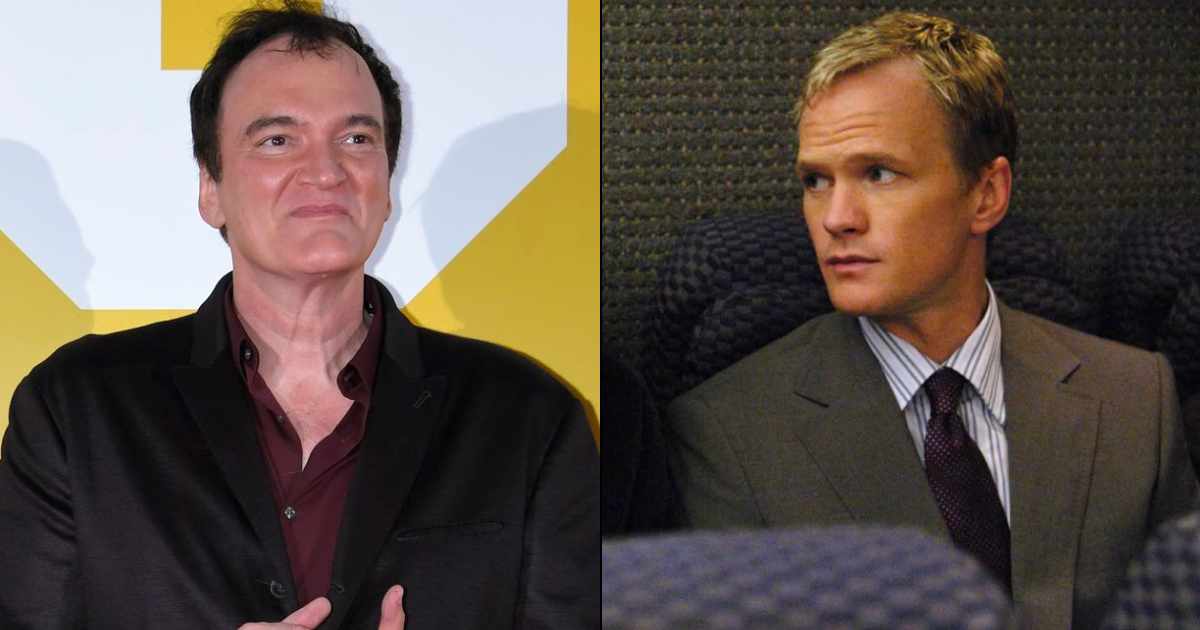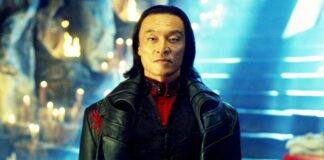
Quentin Tarantino is a name whose iteration immediately instigates us to picture characters in Pulp Fiction and Inglourious Basterds about to indulge in violent shenanigans. But the two-time Academy winner’s affection for film and television embraces far more eclectic tastes. In a 2012 interview, the Kill Bill director surprised fans by disclosing, “Hands down, my favorite show is How I Met Your Mother.” (via Cracked) Not only did he confess to watching HIMYM in its entirety, but he reiterated the sentiment three years later in another interview.
While on a peripheral note, a cozy rom-com like HIMYM seems outside Quentin Tarantino’s radar, in hindsight, it makes total sense. Scroll to see why Tarantino may have liked HIMYM like he did.
How I Met Your Mother Is The Perfect Sitcom For An Intellectual Like Quentin Tarantino
Known for his stylized violence and nonlinear narratives, it seems unbecoming for Tarantino to fawn over a romantic sitcom. However, How I Met Your Mother is more than a standard sitcom, thanks to its inventive storytelling, complex character arcs, and logical jokes. One could argue it’s both a mystery and a tragicomedy — a dynamic unforeseen in a genre otherwise yielding bland products like Friends or The Big Bang Theory. Tarantino’s films similarly mix humor with drama, illustrating his versatility as a storyteller. Their works share more than tone; the structural techniques offer striking parallels.
View this post on Instagram
Fake History Lessons & Revisionist Mythmaking
How I Met Your Mother frequently distorts real-world history for comedic effect. Episodes feature exaggerated tales that mirror the mythmaking of religious texts, the Age of Discovery, and Ancient Rome, particularly through Barney Stinson’s antics.
Trending
These playful takes on history mirror Quentin Tarantino’s revisionism in Inglourious Basterds (Hitler’s death), Once Upon a Time in Hollywood (Sharon Tate’s survival), and Django Unchained (slavery vengeance fantasy). Both the show and Tarantino’s films thrive on “what if” scenarios, amalgamating fact with fiction to reintroduce historical consensus.
Nonlinear Plots & Unreliable Narrators
Both HIMYM and Tarantino’s films exploit nonlinear storytelling. The show routinely jumps timelines, supported by an unreliable narrator. Episodes like ‘The Platinum Rule’ use layered narratives — stories within stories — echoing literary structure.
Tarantino’s Pulp Fiction and Reservoir Dogs similarly unravel non-chronologically, with chapter markers and time stamps offering navigation. This device cultivates audience intrigue, as seen in Vincent Vega’s sudden death occurring midway through Pulp Fiction, only to reappear alive later.
View this post on Instagram
Pop Culture References & Stylized Elements
Whether over beers at MacLaren’s or a Thanksgiving dinner, characters in HIMYM engage in absurd, obsessive pop culture debates — from candy names to U.S. Presidents with the dirtiest-sounding surnames. Quentin Tarantino’s characters similarly deliberate over burgers (Pulp Fiction) or play verbal mind games (Inglourious Basterds), often in booths or confined spaces — a motif extending to The Hateful Eight. These stylized environments reinforce conversational tension, balancing humor and suspense.
Fashion also operates as a symbolic language. Barney’s obsession with suits parallels the iconic black suits worn in Reservoir Dogs and Pulp Fiction, where characters are later forced into casual wear during “The Bonnie Situation” — an ironic contrast to their typically sleek appearance.
Robin’s fixation on guns and recurring martial arts themes in HIMYM echo Quentin Tarantino’s reverence for Hong Kong cinema and 70s action films. Quentin Tarantino immortalizes figures like Bruce Lee in Once Upon a Time in Hollywood, just as How I Met Your Mother enshrines The Karate Kid in its lore.
Advertisement
For more such stories, check out Hollywood News
Must Read: How Dominique Thorne’s Marvel Journey Took A Surprising Turn After A Major Rejection
Follow Us: Facebook | Instagram | Twitter | YouTube | Google News



 Follow Us
Follow Us









